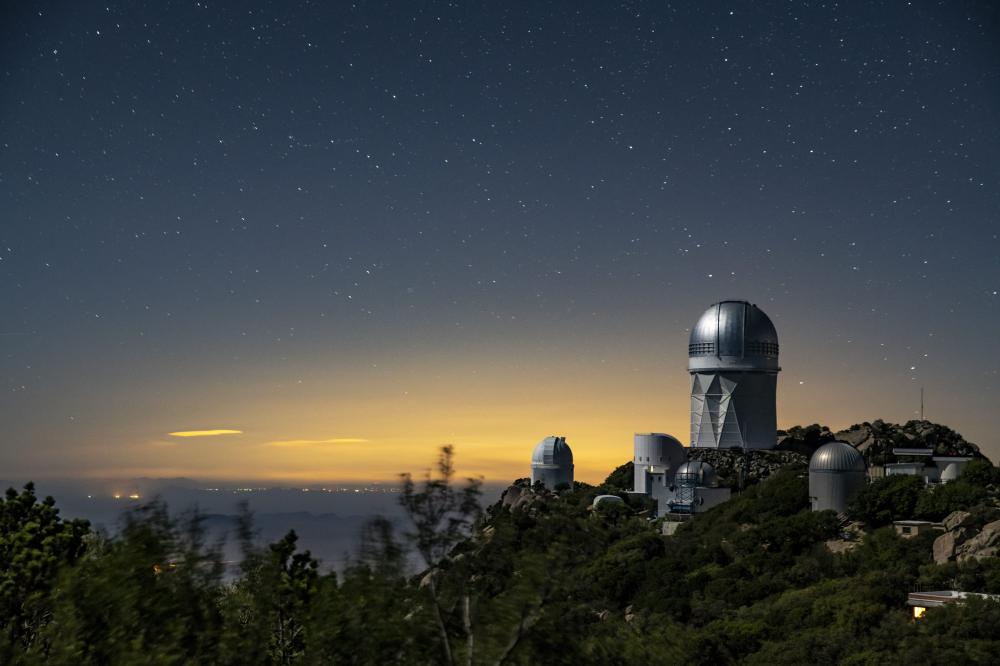
The Dark Energy Spectroscopic Instrument (DESI) is located on the 4-meter Mayall telescope at the Kitt Peak National Observatory, Arizona (USA). The first DESI data collected in 2020 are now freely available. Credit: Marilyn Sargent/Berkeley Lab
The Universe is immensely big, and getting bigger all the time. To study dark energy, the mysterious force behind the accelerating expansion of our Universe, scientists are using the large Dark Energy Spectroscopic Instrument (DESI) survey to map over 40 million galaxies, quasars and stars. Today, the collaboration has released its first batch of data, with nearly 2 million astrophysical objects for researchers to study. It is also publishing 15 papers on the scientific study of these data, and on the instrument, operations and validation of the survey observation strategy.
The data set (80 terabytes) comes from 2,480 exposures taken over six months during the so-called "survey validation" phase in 2020 and 2021 and processed in Python language on the supercomputer at the National Energy Research Scientific Computing Center (NERSC, Berkeley, USA). During this period, between the instrument's commissioning and the start of the official scientific campaign, researchers ensured that the instrument's performance would meet their scientific objectives - for example, by checking the time needed to observe galaxies of different luminosities, and validating the selection of astrophysical objects such as galaxies, quasars and stars to be observed.
Read the Berkeley press release : https://newscenter.lbl.gov/2023/06/13/desi-early-data-release-holds-nearly-two-million-objects/
DESI is establishing a 3D map of space to understand dark energy, the force behind the accelerating expansion of our Universe. Part of DESI's preparations included the "One-Percent Survey" visualized in this fly-through. Researchers took detailed images in 20 different directions across the sky, creating a 3D map of 700,000 objects and covering around 1% of the total volume DESI will survey. With the instrument and survey strategy now successfully tested, the DESI observing program is making great strides, entering its third of five planned years of data capture. Credits Music and video: David Kirkby/DESI collaboration.
This video, designed to be shown in planetariums, gives an overview of how DESI works and presents an overview of the Universe, based on scientific data from the first year of the experiment. Credit: Fiske Planetarium
Contacts: Etienne Burtin, Vanina Ruhlmann-Kleider, Christophe Yèche.



